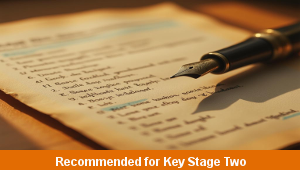Lesson Four – Homework Viewpoints

This English teaching pack for Key Stage Two gets the children to plan and write a discussion text outlining and presenting some of the special arguments for and against schools setting homework for pupils to complete.
The class can select and record matching viewpoints to use when constructing a magazine article about the issue of homework to illustrate the thoughts of different groups.
Download this teaching pack including a lesson plan, classroom activities and an interactive presentation to plan and write a discussion text outlining and presenting some of the special arguments for and against schools setting homework for pupils to complete
Activities in this teaching pack include a shared reading text to identify the structure and format of a discursive writing text that presents viewpoints for and against watching television and a worksheet to plan and write a discussion text outlining arguments for and against a specific issue.
The interactive presentation gets the children to explore how to write a discussion text outlining arguments for and against schools setting homework for pupils.
This lesson is part of an English scheme of work to get the children to practise using persuasive and discursive language to discuss and argue points of view in letters and magazine articles, identify and use rules to learn new spellings and practise using brackets, dashes or commas to indicate parenthesis in sentences. There are teaching activities for shared learning, differentiated worksheets to support independent learning and interactive presentations to introduce concepts and key skills.
-

Length Calculations
Practise using number calculations skills for addition, subtraction, division and multiplication when solving problems related to length measurements
-

Maths Calculations Assessment
Assess abilities in solving a range of different number problems for addition and subtraction when working with informal and formal written calculations
-

Determinant Lists
Explain and model how to make lists of objects used and found in different locations to match the correct determinants of a and an
-

English SPAG Assessment
Assess abilities in composing sentences for fiction and non-fiction using the correct spellings, punctuation marks and grammar vocabulary phrases
